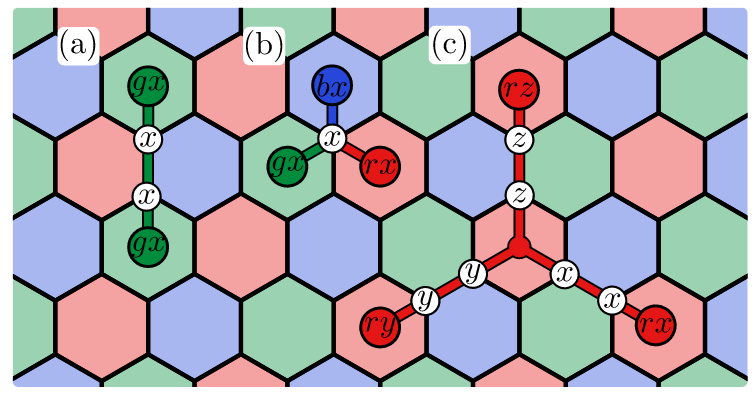Work on topological quantum error correction goes to press in Quantum
Work on topological quantum error correction is published in Quantum, the open journal for quantum science. The color code is both an interesting example of an exactly solved topologically ordered phase of matter and also among the most promising candidate models to realize fault-tolerant quantum computation with minimal resource overhead. The contributions of this work are threefold. First of all, we build upon the abstract theory of boundaries and domain walls of topological phases of matter to comprehensively catalog the objects realizable in color codes. Together with our classification we also provide lattice representations of these objects which include three new types of boundaries as well as a generating set for all 72 color code twist defects. Our work thus provides an explicit toy model that will help to better understand the abstract theory of domain walls. Secondly, we discover a number of interesting new applications of the cataloged objects for quantum information protocols. These include improved methods for performing quantum computations by code deformation, a new four-qubit error-detecting code, as well as families of new quantum error-correcting codes we call stellated color codes, which encode logical qubits at the same distance as the next best color code, but using approximately half the number of physical qubits. To the best of our knowledge, our new topological codes have the highest encoding rate of local stabilizer codes with bounded-weight stabilizers in two dimensions. Finally, we show how the boundaries and twist defects of the color code are represented by multiple copies of other phases. Indeed, in addition to the well studied comparison between the color code and two copies of the surface code, we also compare the color code to two copies of the three-fermion model. In particular, we find that this analogy offers a very clear lens through which we can view the symmetries of the color code which gives rise to its multitude of domain walls.

News from Oct 26, 2018